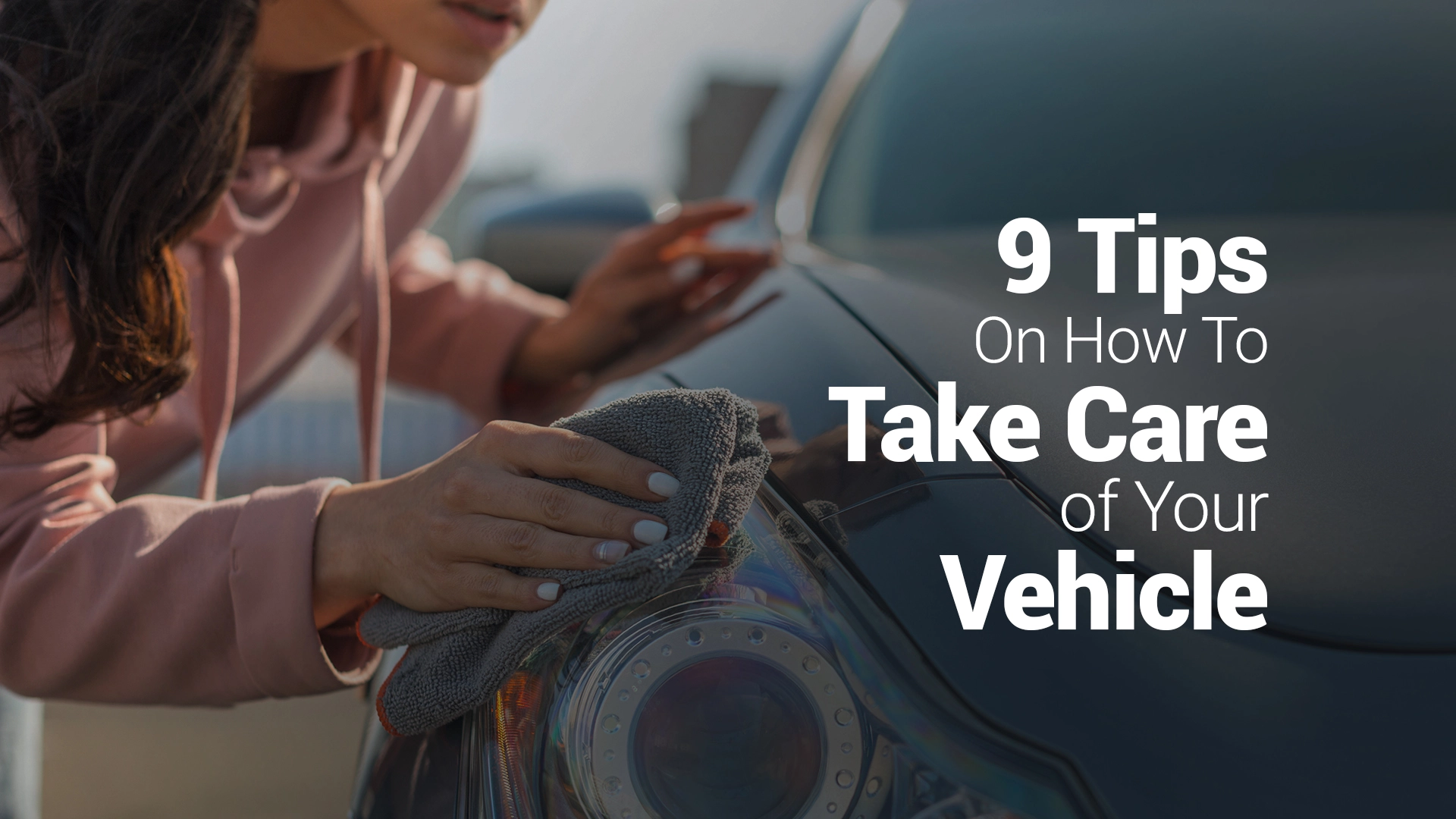9 Tips On How To Take Care of Your Vehicle
Introduction

Taking care of a car is no easy feat. Every little thing you do matters and if you want your vehicle to serve you for a long time to come, then this article is for you. In fact, we’ll throw in an easy tip! Head over to Simply Car Mats for a wide range of mats to protect your vehicle’s interior.
Read on for more tips and tricks on car care to keep your automobile running longer.
1. Start Off Easy
For newly bought cars, drive slowly during the break-in period (about 55mph for the first 1,000 miles). Importantly, for the first few hours of driving, acceleration should be kept below 3,000 RPMs. The car should not bear heavy weights yet, whether it's on the roof, trunk, or a tow trailer attached. Finally, leaving your car idle is never good at break-ins as the oil might not spread evenly to your engine.
2. Refilling Gas
Some dubious gas stations don't pump their filters, leaving car owners with dirty gas to feed their automobiles. Others make weird mixtures in their gasoline, at times even watering it down. The safest thing for your car is to go to a credible service station for gas.
Another tip is to refrain from buying gas if you see a gasoline tanker at the station. When gas is being refilled, the sediments in the tanks are riled up which can block filters and injectors in your vehicle. Soon, you’ll need a repair which is not worth the mistake.
Keep a record of your tank fills and mileage to make it easier to track. This helps drivers notice any issues with the mileage early.
3. When On The Road
If your vehicle gets stuck in soft grounds, going back and forth repeatedly only creates heat which damages other components of your car. The safer and cheaper option is to call a toll truck. Another tip is to occasionally run your air-conditioning unit in the winter and use a refrigerant. This keeps the AC system from freezing up rendering it useless in the summer.
If your car keys are put together on a chain with other heavy items, it could damage the key ignition over time as you leave the keys in. If you don’t want failed ignition that could get you stuck on the road someday, remove the keys from the chain to make it as lightweight as possible. The last thing you want is to get stranded because you can’t get your car started.
4. When Parking
The best places to park are in shaded areas. Whether it's in a garage or under a tree, providing shade from UV rays reduces damage to the interior of the car. If these places are not available to you, consider investing in car shades. Car shades come fitted with various ways of adhering to your windscreen and windows.
When stationing your cars for the night, remember to keep the tire valve caps on at all times. They may be small but they function to keep contaminants out, preventing leaks and flat tires. It then follows that when changing tires, you should ensure that the valves are replaced as well.
5. Choose A Good Car Insurer
In the event of an accident, getting good car insurance can be a lifesaver. A comprehensive insurance plan includes coverage for originally manufactured parts and quality repairs. Make sure that the terms of the plan cater to these needs.
6. Cleaning
When washing your vehicle, vacuum first before cleaning it with a wet sponge stop. this minimizes scratches as well as corrosive damage from contaminant liquids. In terms of cleaning detergent, a mixture of mild soap and water will do. When cleaning your dashboard, gently use a moist cloth to remove dirt from the surfaces. The last thing you want is to scratch them, which could block visibility. Car mats are great because they protect the floor of your automobile. You should be gentle in removing them to avoid appalling contaminants on the car floor. Clean them thoroughly before leaving them out to dry. This drying process is critical as it prolongs the life of the car mats.
Meaning of engine is tricky but a necessary step because it not only keeps your engine cool but also makes leaks easier to spot. All you need is a scrub, cleaning products as well as plastic bags to seal off other components like the distributor and electrical parts. If cleaning products sold in stores are unavailable to you, any dishwashing liquid or grease-removing detergents will do the trick.
7. Maintenance
Leather seats are durable and require minimal cleaning. That said, they still do require maintenance such as the removal of contaminants and the application of a topcoat for the leather used in the car upholstery. The topcoat serves as a protectant to resist stains, making future cleaning an easier process.
Both tire inflation and alignment have to be regularly checked. Especially in the heat, tires that are insufficiently inflated spoil, warranting a pricey replacement. Ideally, you should have a pressure gauge to ensure that your tires are sufficiently inflated according to the manual. Wheels that are misaligned can cause difficulties in steering and controlling the vehicle, which will also lead to wear and tear effects on your tires. It is suggested as a guide to having your tires checked once every 30,000 miles.
To prolong the life of the engine, car owners should frequently change the oil in their vehicles so that abrasive materials and dirt are flashed out. Many manuals recommend a less frequent oil change but this would mean that contaminants remain inside the car, causing damages for longer periods of time. Importantly, you should also clean the drain plugs before putting them back as some plugs have magnetic properties that keep metal contaminants at bay.
Lastly, performing monthly checks on the power-steering fluid can not only improve steering efficiency but also prolong the life of the power-steering pump. If the level of power-steering fluid is low, chances are, there are leaks in the hoses and pumps.
8. Protecting The Exterior Of Your Automobile
Another reason for packing in shaded areas is to protect the paint on the car exterior. The paint not only makes your car look presentable but also prevents rust to a certain extent. Sun rays can be damaging to the paint layer so many car owners opt for a car shade for protection against moisture, dust, and even bird shit. Cracks in your windshield, even small ones, can block vision and even spread if left untreated. The most cost-effective solution would be to get those cracks repaired early on. Speaking of the windshield, use washer fluid instead of water to fill the washer tank. If you think the fluid tank is empty, refill the tank first as continued usage may damage the pump.
9. Battery Maintenance
Even if you've been taught that your battery doesn't require maintenance, it's better to be safe than sorry. Start by cleaning the battery case with a damp cloth and mild detergent. There are guides available online on how to safely clean the battery terminals. While you're at it check the battery case for damages before reinstalling the batteries.
Conclusion
Overall, we have provided you with nine tips on how you can maintain your car and prolong its life on the road. Everything from the internal mechanisms like the battery to the exterior factors like the paint has to be considered and taken care of. Well, we understand the complexities of owning a car and we hope that this guide has been useful to you.
---
Published: 26-Mar-2021
Author: Jake Hughes

You can see a list of our current authors and short bio here
